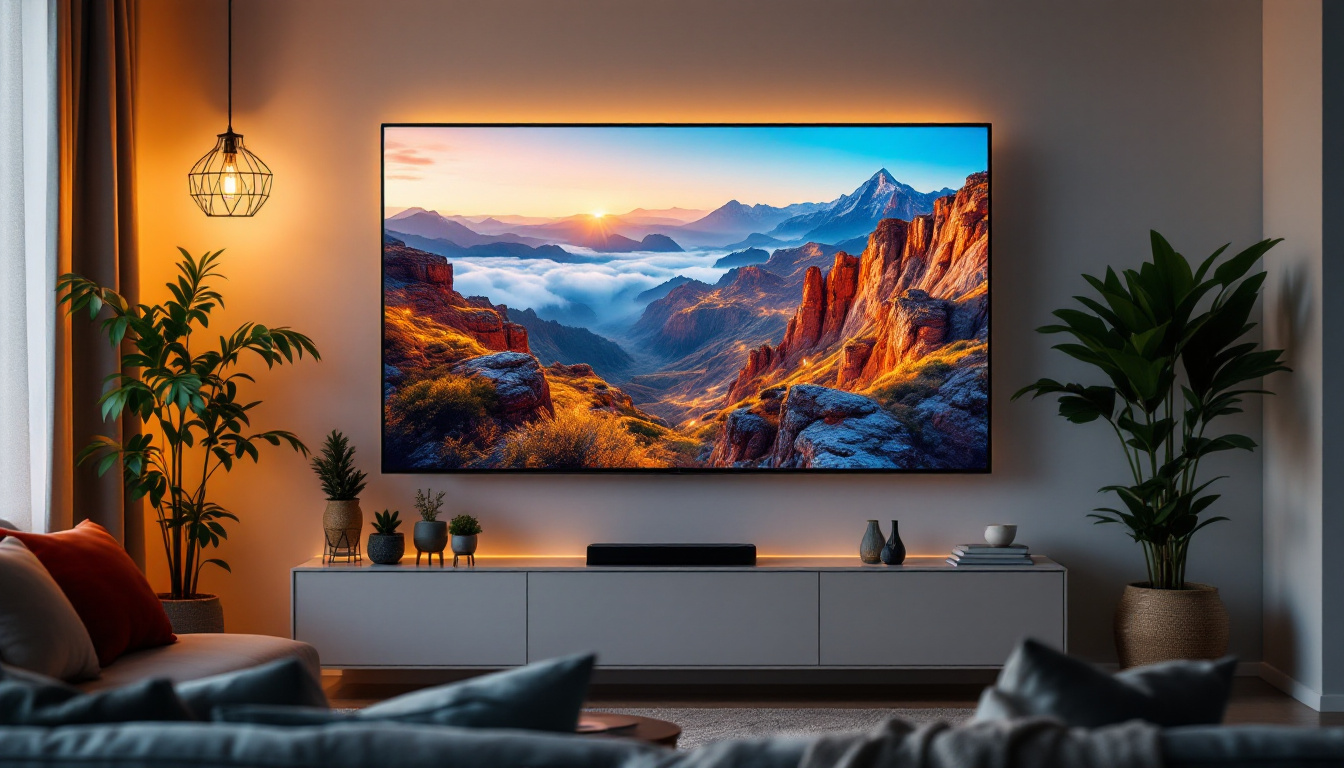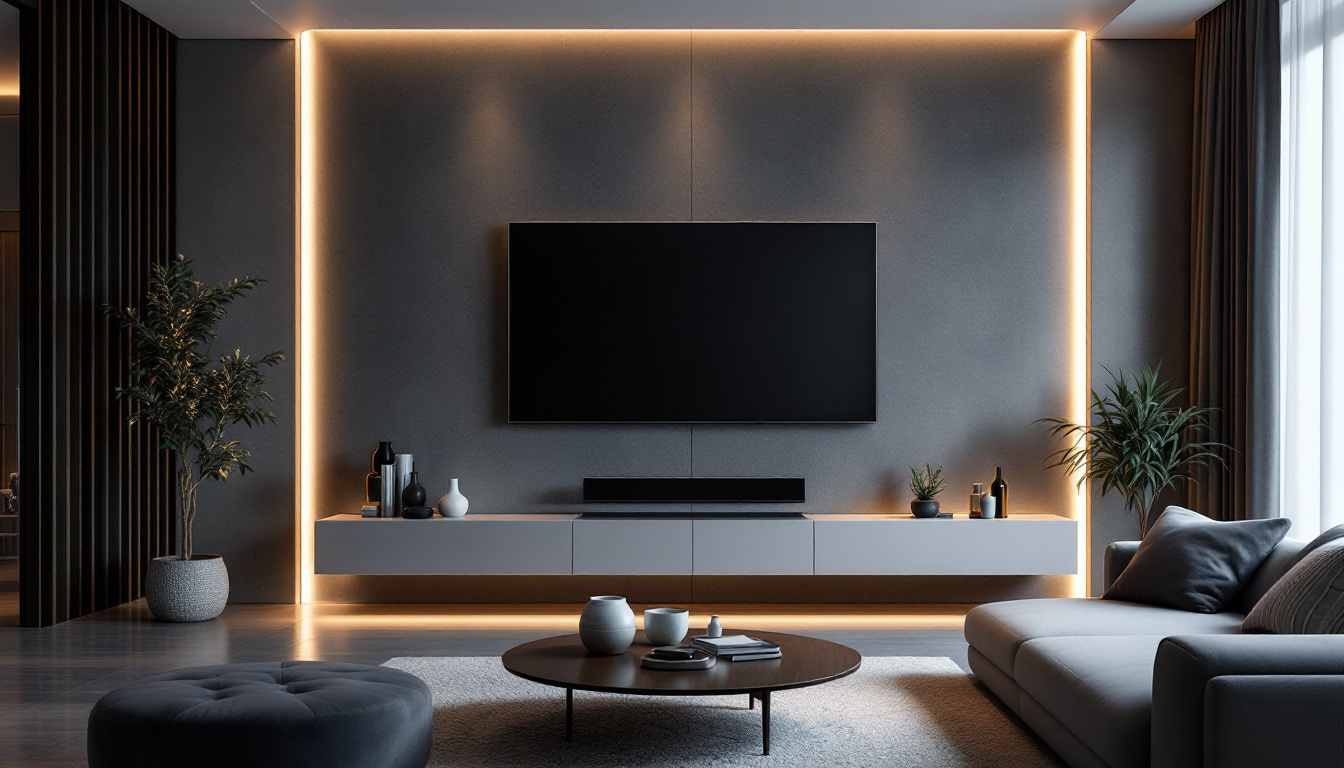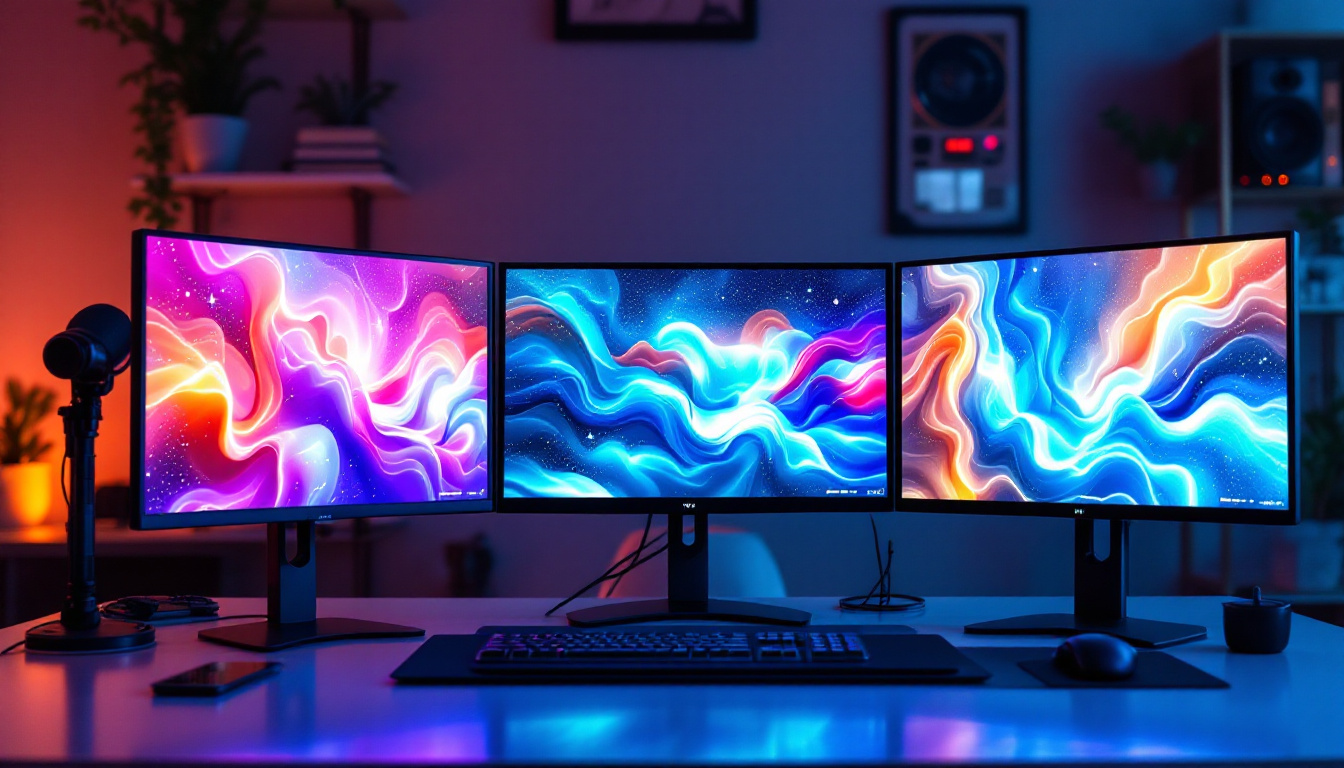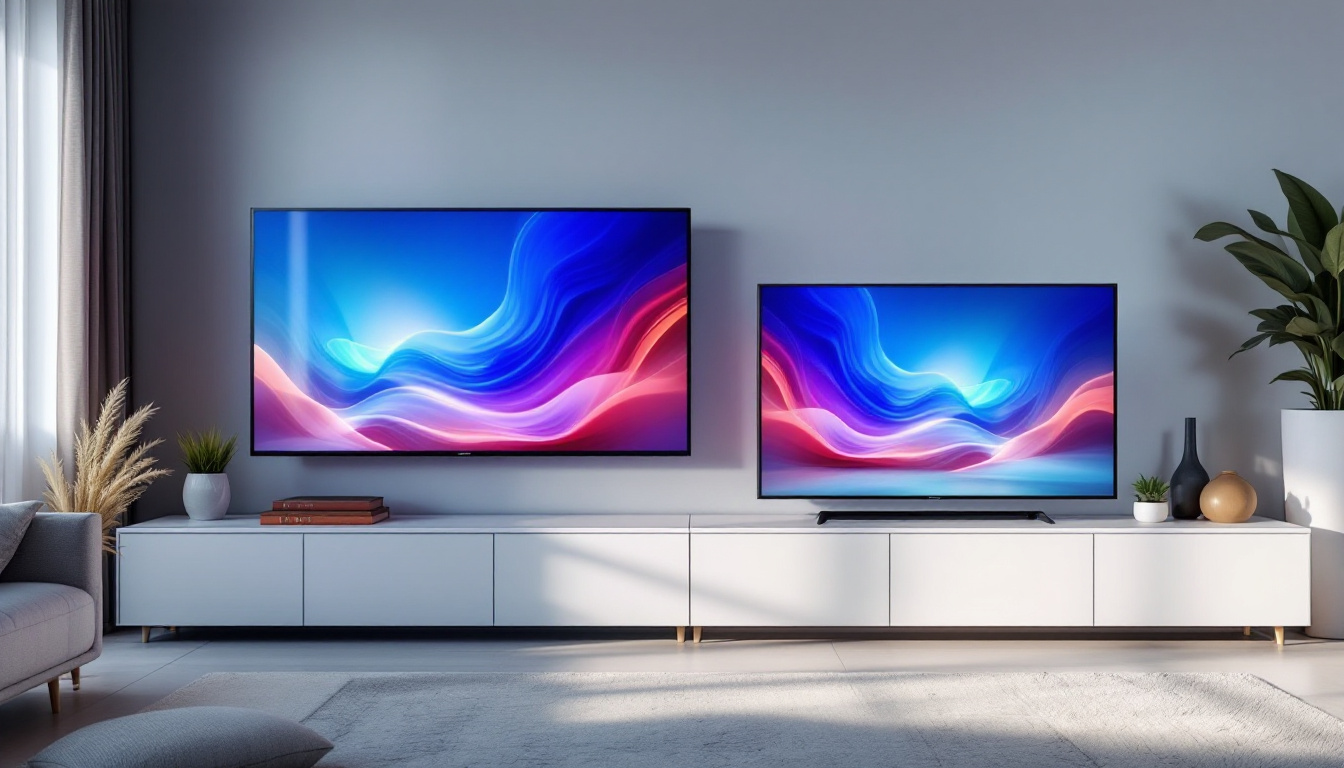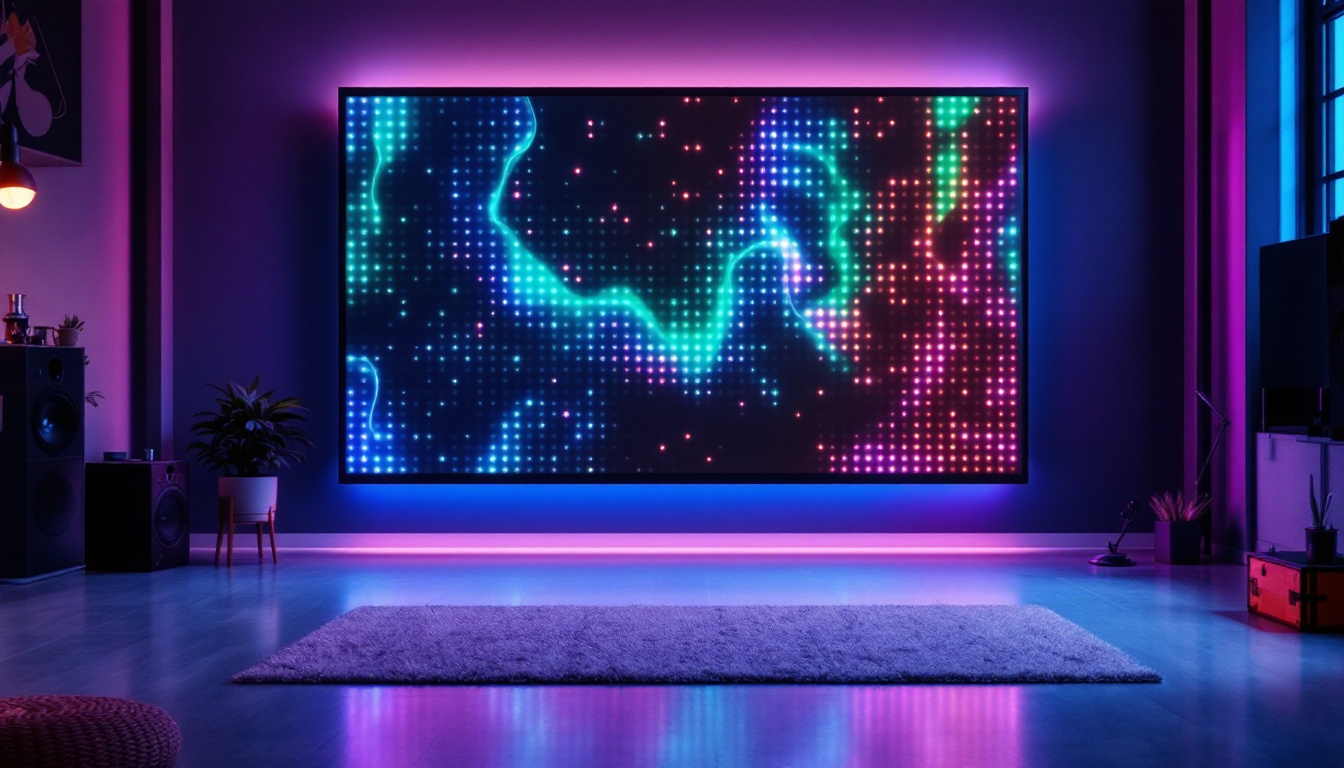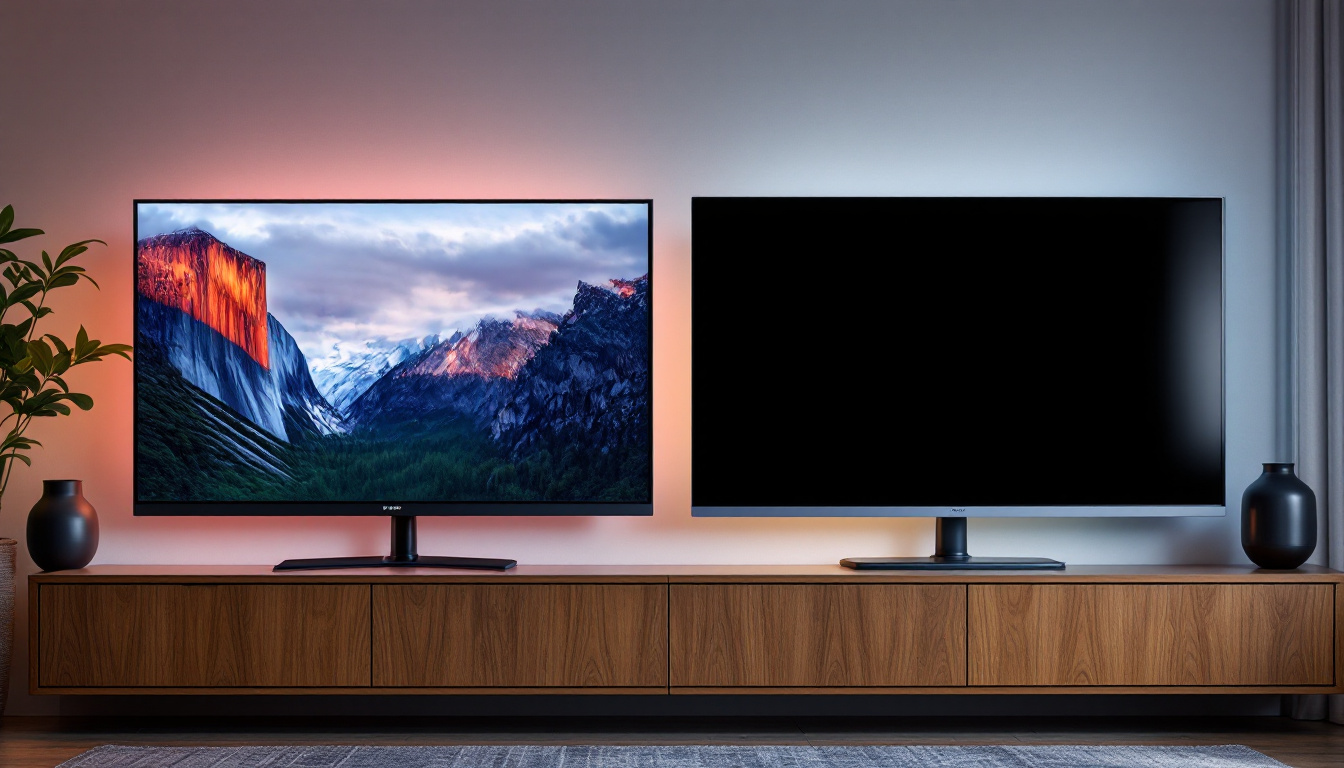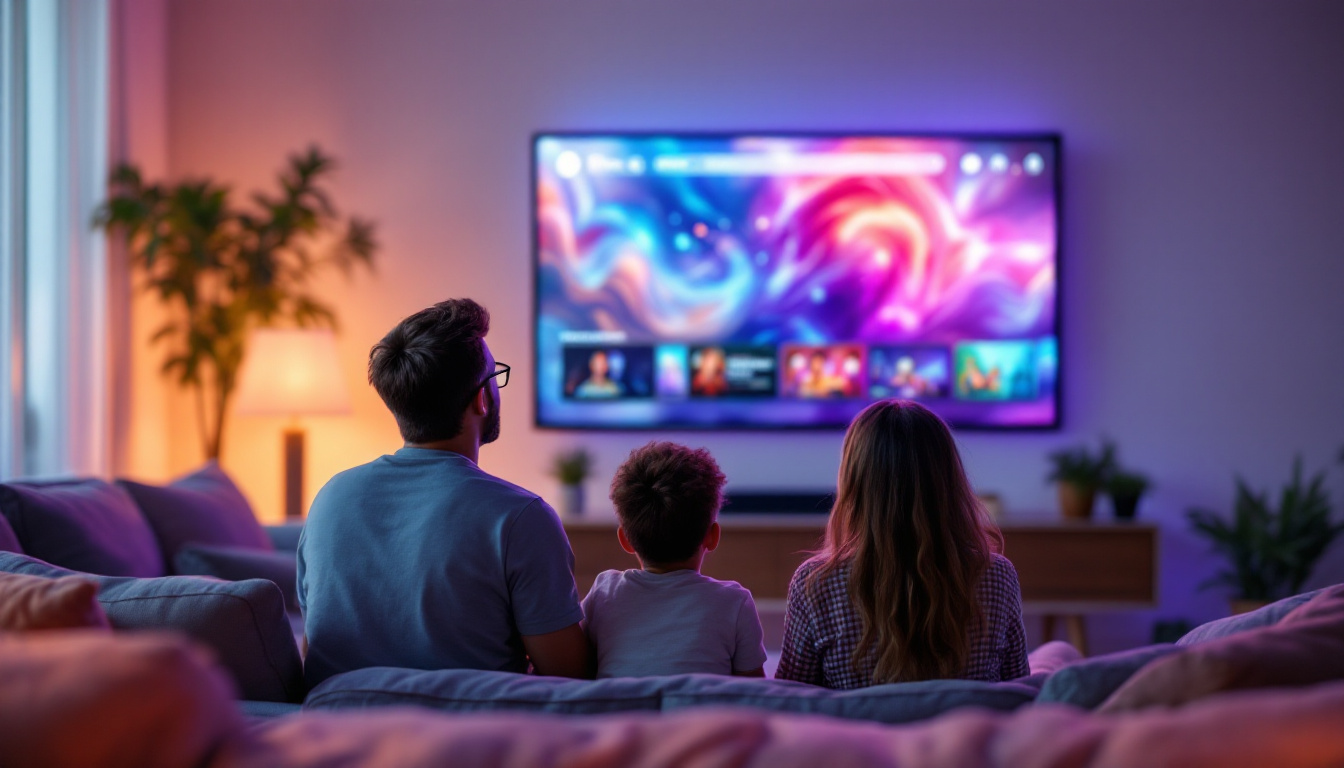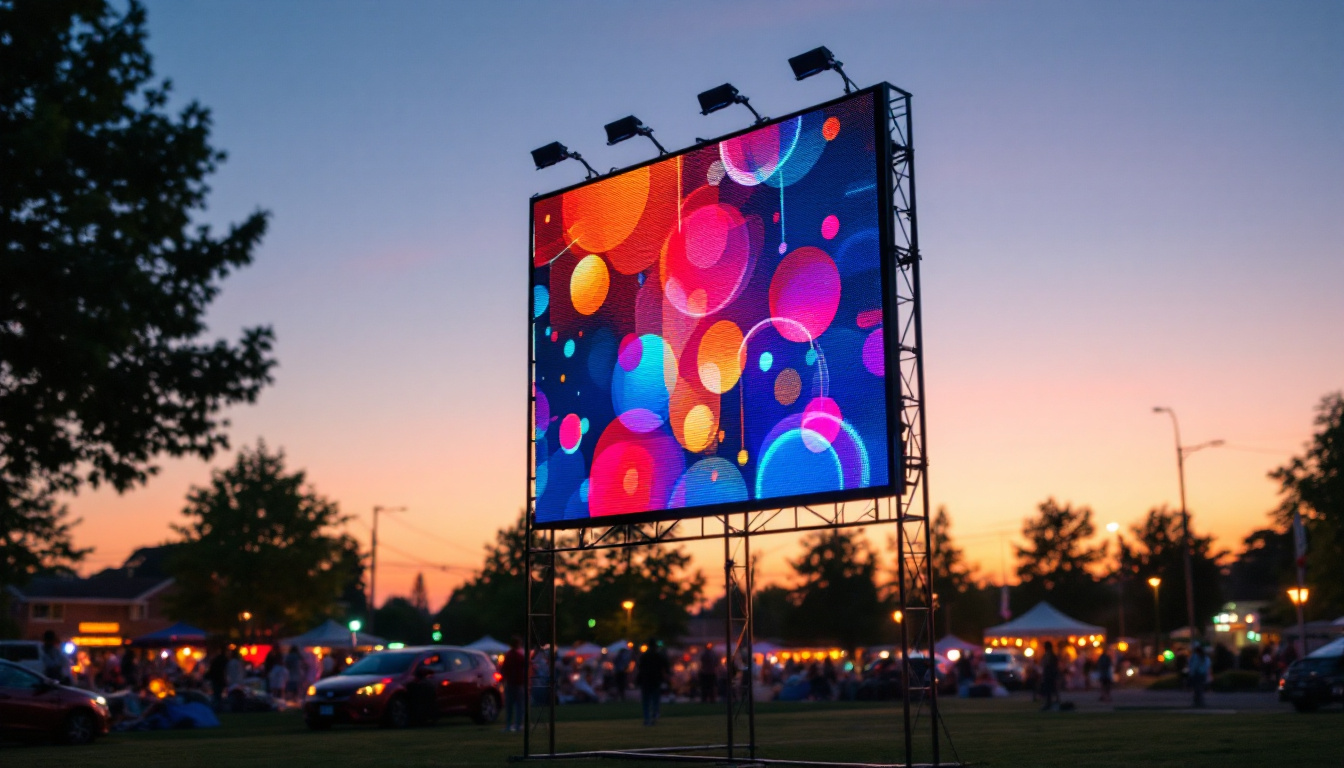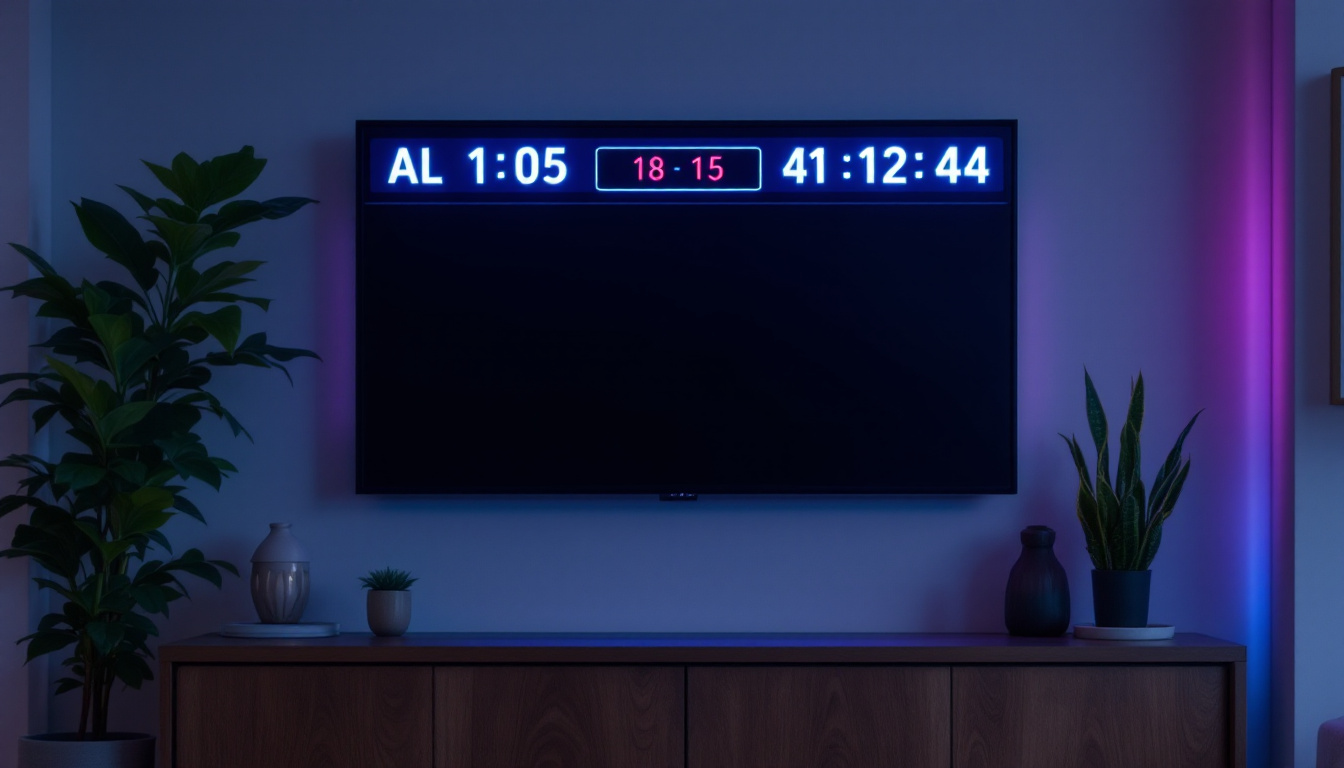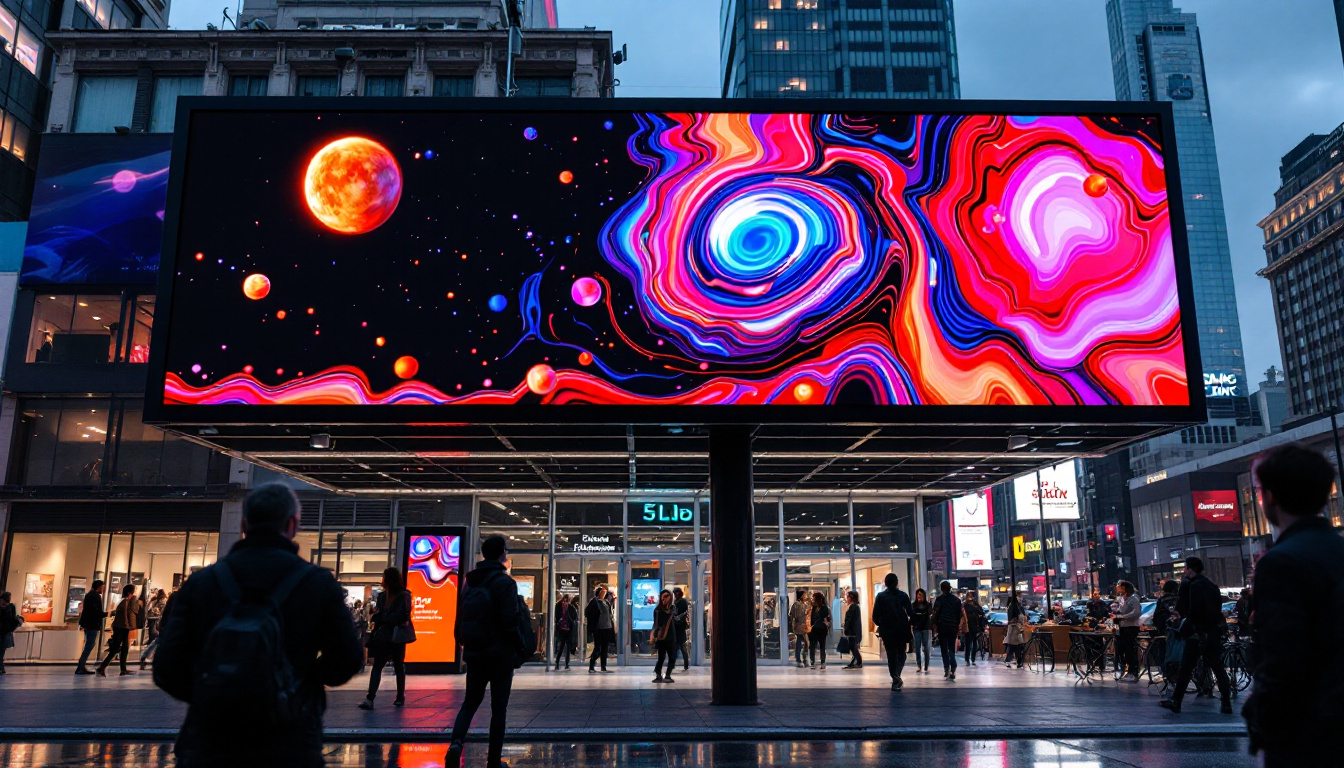Diagonal TV Dimensions: LED Display Explained
In the realm of home entertainment, understanding the dimensions of your television is crucial for creating an optimal viewing experience. With the rise of LED displays, the diagonal measurement has become a standard way to describe screen size. This article delves into the significance of diagonal TV dimensions, how they relate to LED displays, and the factors to consider when choosing the right size for your space.
Understanding Diagonal Measurements
The diagonal measurement of a television screen is the distance from one corner of the screen to the opposite corner. This measurement is typically expressed in inches and serves as a key indicator of the screen size. For instance, a 55-inch TV has a diagonal measurement of 55 inches from the bottom left corner to the top right corner.
Why Diagonal Measurements Matter
Diagonal measurements are essential for several reasons. Firstly, they provide a straightforward way to compare different TV models. When shopping for a television, consumers often rely on this measurement to gauge the size of the screen relative to their viewing area.
Secondly, the diagonal size impacts the overall viewing experience. A larger screen can enhance immersion, especially when watching movies or playing video games. However, it is important to balance screen size with the distance from which viewers will be watching, as too large a screen can lead to discomfort. For example, the ideal viewing distance for a 55-inch TV is generally considered to be between 6.5 to 11.5 feet, depending on the resolution of the television. This distance helps ensure that viewers can appreciate the detail without straining their eyes or experiencing pixelation.
How Diagonal Measurements Are Calculated
Calculating the diagonal measurement of a television involves using the Pythagorean theorem. The width and height of the screen are squared, added together, and then the square root of the sum is taken. This mathematical approach ensures that the diagonal measurement accurately reflects the actual size of the screen.
Most manufacturers provide the diagonal measurement prominently in their specifications, making it easier for consumers to make informed decisions. However, understanding the width and height can also be beneficial, especially when considering furniture placement and room layout. For instance, a TV’s width can influence how it fits into an entertainment center or how far apart speakers should be placed for optimal sound. Additionally, knowing the height can help in determining the best mounting height for wall-mounted TVs to ensure comfortable viewing angles. This attention to detail can greatly enhance the overall home theater experience, allowing for a more tailored setup that meets individual preferences and room constraints.
LED Display Technology
Light Emitting Diode (LED) technology has revolutionized the television industry, offering brighter images, better contrast, and improved energy efficiency compared to older technologies like LCD and plasma. LED TVs utilize a backlighting system that enhances picture quality, making them a popular choice for consumers. The advancement in LED technology has not only improved the viewing experience but has also paved the way for larger screen sizes and ultra-high-definition resolutions, allowing viewers to enjoy their favorite content in stunning detail.
The Advantages of LED Displays
One of the primary advantages of LED displays is their ability to produce vibrant colors and deep blacks. This is achieved through local dimming technology, which allows certain areas of the screen to be dimmed while others remain bright. This feature enhances the overall contrast ratio, resulting in a more dynamic viewing experience. Moreover, LED displays are capable of producing a wider color gamut, which means that they can display a broader spectrum of colors, making movies and shows appear more lifelike and immersive.
Additionally, LED TVs are generally thinner and lighter than their predecessors, making them easier to mount on walls or fit into entertainment centers. Their energy efficiency is another selling point, as they consume less power than older display technologies, leading to lower electricity bills over time. The longevity of LED displays also contributes to their appeal; they typically have a longer lifespan than traditional televisions, which means consumers can enjoy their investment for years without the need for frequent replacements.
Different Types of LED Displays
When exploring LED technology, it is important to recognize that there are various types of LED displays. The most common types include:
- Standard LED: This type uses traditional LED backlighting and is suitable for most viewing environments.
- QLED: Quantum Dot LED TVs utilize quantum dots to enhance color accuracy and brightness, providing a more vivid picture.
- OLED: Organic LED displays offer superior contrast and color depth by using self-emissive pixels, though they tend to be more expensive.
Each type of LED display has its unique strengths and weaknesses, which can influence the choice of television based on individual preferences and viewing habits. For instance, while OLED displays are often favored for their exceptional picture quality, they may not be ideal for bright rooms due to their reflective surfaces. On the other hand, QLED displays shine in well-lit environments, providing excellent brightness levels and color vibrancy. Understanding these differences can help consumers make informed decisions that best suit their home entertainment needs.
Furthermore, advancements in LED technology continue to emerge, with innovations such as Mini-LED and MicroLED displays gaining traction in the market. Mini-LED technology uses smaller LEDs for backlighting, resulting in improved contrast and brightness control, while MicroLED offers the potential for modular displays that can be customized to fit any size or shape. As these technologies evolve, they promise to further enhance the viewing experience, pushing the boundaries of what is possible in display technology.
Choosing the Right Size TV
Selecting the appropriate size for a television involves more than just considering the diagonal measurement. Various factors come into play, including the size of the room, viewing distance, and personal preferences.
Room Size and Layout
The dimensions of the room where the TV will be placed significantly impact the ideal screen size. A larger room can accommodate a bigger television, while a smaller space may require a more modest size to avoid overwhelming the area.
Moreover, the layout of the room should be considered. If the seating arrangement is far from the screen, a larger TV may be necessary to ensure a comfortable viewing experience. Conversely, if the seating is close, a smaller screen may suffice.
Viewing Distance Recommendations
Experts often recommend specific viewing distances based on the size of the TV. A general guideline is to sit at a distance of 1.5 to 2.5 times the diagonal size of the screen. For example, for a 55-inch TV, the ideal viewing distance would range from approximately 6.5 to 11.5 feet.
These recommendations can vary based on the resolution of the TV as well. Higher resolution TVs, such as 4K models, allow for closer viewing distances without sacrificing image quality. This flexibility can influence the decision-making process when selecting a screen size.
Common TV Sizes and Their Dimensions
Television sizes can range from small screens suitable for bedrooms to massive displays designed for home theaters. Understanding the common sizes and their corresponding dimensions can help consumers make informed choices.
Popular TV Sizes
Some of the most common TV sizes available in the market include:
- 32 inches
- 43 inches
- 50 inches
- 55 inches
- 65 inches
- 75 inches
- 85 inches
Each of these sizes has its own advantages and is suited for different types of rooms and viewing experiences. For example, a 32-inch TV is ideal for a small bedroom or kitchen, while a 75-inch model is better suited for a spacious living room or home theater.
Aspect Ratios and Their Impact
Another important consideration when discussing TV dimensions is the aspect ratio. The most common aspect ratio for televisions today is 16:9, which means the screen is 16 units wide for every 9 units of height. This ratio is well-suited for widescreen content, such as movies and television shows.
Understanding the aspect ratio is crucial when selecting a TV, as it affects how content is displayed. For example, older 4:3 aspect ratio content may appear with black bars on the sides of a 16:9 screen. This can impact the overall viewing experience, especially for those who frequently watch classic films or shows.
Installation and Placement Considerations
Once the right TV size has been selected, the next step is to consider installation and placement. Proper positioning can enhance the viewing experience and ensure comfort during extended viewing sessions.
Wall Mounting vs. Stand Placement
Televisions can be either wall-mounted or placed on a stand, and each option has its benefits. Wall mounting can save space and create a sleek look, while stands provide flexibility for rearranging furniture and easy access to ports and cables.
When wall mounting, it is essential to choose the right height. A common recommendation is to position the center of the screen at eye level when seated. This minimizes neck strain and enhances comfort during viewing.
Cable Management and Aesthetics
Proper cable management is another important aspect of TV installation. Hiding cables can create a clean and organized appearance, reducing visual clutter in the room. Various cable management solutions are available, including cable covers, clips, and in-wall systems.
Additionally, considering the overall aesthetics of the room is vital. The TV should complement the existing decor and not dominate the space. Choosing a frame or finish that matches the room’s style can enhance the overall ambiance.
Conclusion
Understanding diagonal TV dimensions and LED display technology is essential for making an informed purchasing decision. By considering factors such as room size, viewing distance, and personal preferences, consumers can select the perfect television to enhance their home entertainment experience.
As technology continues to evolve, staying informed about the latest trends and advancements in display technology will ensure that viewers can enjoy the best possible picture quality and viewing experience for years to come.
Ultimately, whether it’s for binge-watching the latest series, enjoying movie nights with family, or gaming with friends, the right television can transform any space into an entertainment hub. With the right knowledge, consumers can confidently navigate the world of television dimensions and LED displays, ensuring they make a choice that fits their lifestyle and enhances their viewing pleasure.
Discover the Future of Home Entertainment with LumenMatrix
Ready to elevate your viewing experience with the latest in LED display technology? LumenMatrix is at the forefront of innovation, offering a wide range of LED display solutions tailored to your needs. From immersive Indoor LED Wall Displays to dynamic Outdoor LED Wall Displays, and from versatile Vehicle LED Displays to sleek LED Poster Displays, we have it all. Our mission is to transform your visual communication and entertainment spaces with displays that not only enhance engagement but also captivate your audience. Don’t miss out on the opportunity to bring your home entertainment to life. Check out LumenMatrix LED Display Solutions today and join the revolution in visual excellence.

